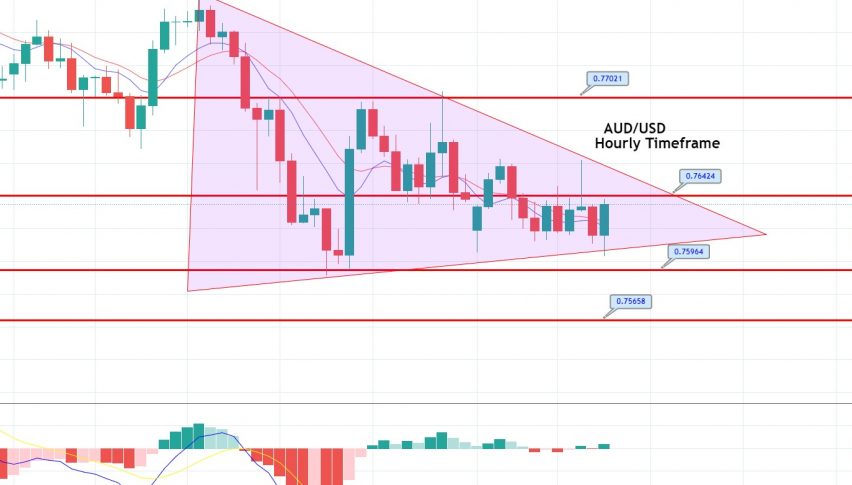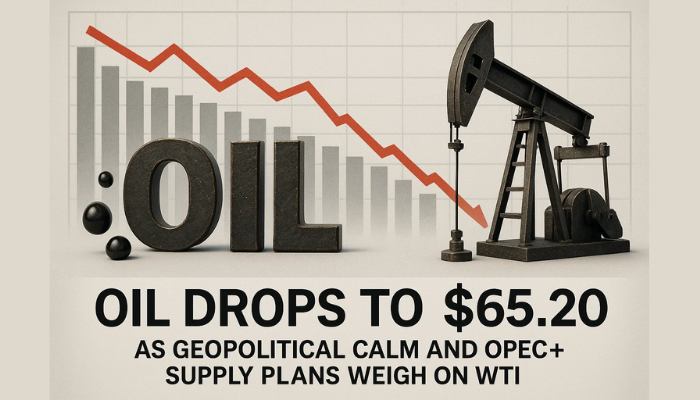AUD/USD Symmetric Triangle Pattern in Play – A Quick Update on the Signal!
The AUD/USD pair is trading with a neutral bias at 0.7624 level, holding immediate support at 0.7596 area. On the lower side, the violation

The AUD/USD pair closed at 0.76429, after placing a high of 0.77036, and a low of 0.76310. The AUD/USD currency pair dropped on Friday, amid the risk-off market sentiment and the strength of the US dollar. The safe-haven demand supported the US Dollar, as the retail frenzy weighed on the risk sentiment and added to the losses in the US stocks. The speculations by retail investors continued to frighten the equity market, causing the Dow Jones Industrial Average to lose 2% and close below the 30,000 mark for the first time since Dec. 14. Furthermore, the S&P 500 fell by 1.9%, and NASDAQ dropped by 2%. As a result, the US dollar index, which measures the value of the greenback against a basket of six major currencies, rose by 0.3%, to 90.75, lending strength to the US dollar. As a result, the strong greenback ultimately put pressure on the AUD/USD pair on Friday.
Meanwhile, the risk-sensitive Aussie also fell during the trading session on Friday, after the risk-off market sentiment picked up pace. On the coronavirus front, the new, highly anticipated vaccines from Novavax and Johnson & Johnson failed to meet their claims, disappointing the market traders and bruising the risk sentiment.
It was expected that the vaccines would provide full protection against the coronavirus; however, trial data revealed that the Novavax vaccine was 89% effective while the J&J vaccine was 72% effective in the US. The J&J vaccine, which was claimed to provide full immunity against the virus, could only provide 66% protection worldwide, due to a new variant of the coronavirus first identified in South Africa. These vaccine-related disappointments put further pressure on the risk-sensitive Australian dollar, ultimately burdening the AUD/USD prices.
On the data front, at 18:30 GMT, the Core PCE Price Index for December came in, showing an improvement to 0.3%, against the predicted 0.1%, which supported the US dollar and added to the losses in the AUD/USD pair. The Employment Cost Index for the quarter also improved, coming in at 0.7%, against the predicted 0.5%, which boosted the US dollar, supporting the bearish movement in the currency pair. The Personal Income for December also improved to 0.6%, against the predicted 0.1%, which lent strength to the US dollar and added to the losses in the AUD/USD pair. In December, personal spending weakened to -0.2%, against the predicted -0.4%, supporting the US dollar and ultimately weighing on the AUD/USD.
At 19:45 GMT, the January Chicago PMI from the US came in, showing an improvement to 63.8, against the predicted 58.4, which boosted the greenback and resulted in additional losses for the AUD/USD pair. At 20:00 GMT, the Pending Home Sales for December were released. They indicated a drop to -0.3%, against the predicted -0.5%, which supported the US dollar and added to the losses in the currency pair. The Revised UoM Consumer Sentiment for January was in line with the prediction of 79.0, and the Revised UoM Inflation Expectations for January also remained flat, on par with the previous 3.0%.

Daily Technical Levels
Support Resistance
0.7613 0.7720
0.7549 0.7763
0.7506 0.7827
Pivot Point: 0.7656
The AUD/USD pair is trading with a neutral bias at 0.7624, holding immediate support at 0.7596. On the lower side, the violation of the 0.7596 level could trigger selling until 0.7565. Conversely, a continuation of the bullish trend could lead the pair higher, until the next target level of 0.7700. The 50 periods EMA support a selling bias today. Let’s consider taking a selling trade below the 0.7642 level today. Good luck!
- Check out our free forex signals
- Follow the top economic events on FX Leaders economic calendar
- Trade better, discover more Forex Trading Strategies
- Open a FREE Trading Account


